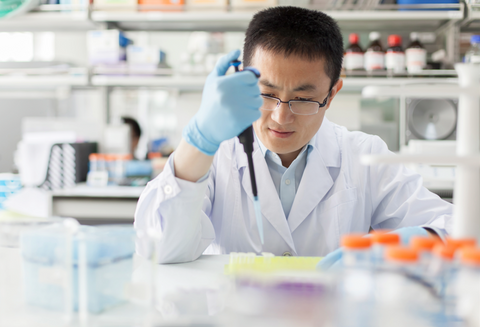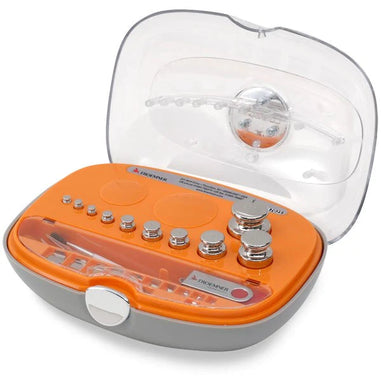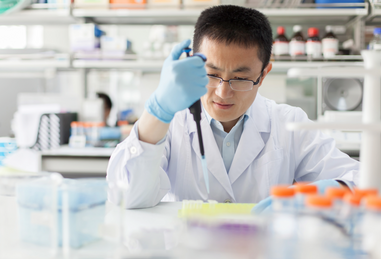- No products in the cart.
In the world of scientific research, precision and accuracy are paramount. Every step of an experiment, from initial measurements to final analyses, relies on the careful handling of liquids. Pipettes, the workhorses of liquid handling, play a pivotal role in achieving reliable and reproducible results. To ensure the utmost accuracy, pipette calibration is an essential practice that cannot be overlooked. In this blog, we delve into the best practices for pipette calibration, guiding researchers towards optimal liquid handling and data integrity.
-
Scheduled Calibration Intervals
Pipettes should undergo regular calibration to maintain their accuracy. Establish a well-defined calibration schedule based on factors such as frequency of use, manufacturer recommendations, and laboratory standards. Adhering to a consistent calibration schedule prevents deviations in accuracy that could lead to erroneous results.
-
Certified Calibration Standards
Utilize certified calibration standards to calibrate pipettes. These standards have traceable accuracy to international standards and ensure that the calibration process itself is reliable. Using uncertified standards or DIY calibration solutions can introduce uncertainty and compromise the calibration's effectiveness.
-
Proper Calibration Environment
Calibrate pipettes in an environment that meets controlled temperature and humidity conditions. Fluctuations in environmental factors can influence pipette performance. A stable calibration environment minimizes these variables and contributes to accurate calibration results.
-
Experienced Personnel
Pipette calibration should be performed by trained and experienced personnel. Calibration technicians should follow standard operating procedures (SOPs) meticulously and have a thorough understanding of the calibration process. This expertise reduces the risk of errors and ensures accurate calibration outcomes.
-
Calibration Data Documentation
Maintain comprehensive documentation of calibration activities. Record calibration dates, technician details, instrument serial numbers, and calibration results. This documentation serves as an audit trail and helps identify trends or patterns in pipette performance over time.

-
Regular Maintenance
Calibration is not a standalone process. Routine maintenance, including cleaning, lubrication, and preventive maintenance, ensures that pipettes remain in optimal condition between calibration intervals. Well-maintained pipettes contribute to accurate liquid transfers and extend the lifespan of the instruments.
-
Performance Verification
After calibration, verify the pipette's performance using gravimetric or photometric methods. This step confirms that the pipette delivers accurate and precise volumes across the entire volume range. Address any discrepancies promptly to maintain reliable liquid handling.
-
Adjustment and Repair
If calibration reveals deviations beyond acceptable limits, pipettes may require adjustment or repair. Calibrated technicians should perform adjustments using authorized procedures provided by the pipette manufacturer. Timely adjustments restore accuracy and prevent erroneous measurements.
-
User Training
Educate laboratory personnel on proper pipetting techniques to minimize operator-induced errors. Inaccurate pipetting habits can compromise calibration efforts. Training sessions on pipette usage, maintenance, and calibration awareness enhance overall data quality.
-
Calibration Traceability
Maintain traceability by working with accredited calibration laboratories or utilizing calibrated reference instruments. Traceability ensures that calibration results can be linked back to recognized measurement standards, reinforcing the reliability of calibration outcomes.
Conclusion
Pipette calibration is a critical practice that underpins accurate liquid handling in research. By adhering to best practices such as scheduled calibration, certified standards, proper documentation, and user training, laboratories can ensure that their pipettes consistently deliver reliable results. A well-calibrated pipette is not just a tool; it's a guarantee of precision, reproducibility, and the foundation of trustworthy scientific exploration.
Lab Pro Calibration stands as California's premier choice for pipette calibration, serving major metro hubs: Los Angeles, Orange County, San Diego, and the Bay Area. With expertise spanning comprehensive calibration services, our adept technicians utilize cutting-edge equipment and stringent procedures to ensure precision. Trust Lab Pro for reliable, accurate, and state-of-the-art calibration for various laboratory instruments, including pipettes and scales. To learn more contact us online or at 888-452-2776.












































